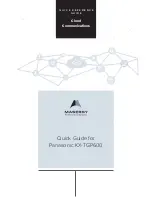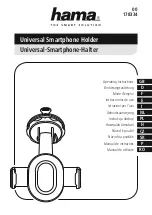
Confidential
USERS MANUAL
22(158)
Document number
Revision
1/198 17-4/FCP 101 3045 Uen
D
submission of the message to the network failed. The application can then determine whether to retry based
on its specific requirements. The outgoing SMS message is processed in the background. Until the message
is received by the network a new MO message CANNOT be queued.
SMS messages received from the network are passed directly to the external application and are not stored
within the module. That said, there is a mechanism to temporarily store messages under certain conditions,
such as when the external application is powered off. In this situation, it is the external application’s
responsibility to immediately read the messages; when a message is read from memory it is removed from the
memory of the CM52.
Per Qualcomm design, the software will perform a rescan to digital only service when attempting to send an
SMS message. After the message has been sent, successfully or not, the module will rescan back to the
current setting in accordance to AT*EPMOD. The intent is to try and make every attempt to send the
message. Since digital service is required for sending SMS, a scan to digital only service is performed.
Therefore, it is possible that the module may be currently camped on AMPS and rescan to Digital when an
SMS message is going to be sent. Note that even if the module has been defined as AMPS Only through
AT*EPMOD, the module will still scan to digital, send the message, then rescan back to AMPS.
3.7
Data Functionality
CM52 supports the following three kinds of data transfer mechanisms:
•
Async
data
•
Quick Net Connect (QNC)
•
1xRTT (Packet data)
Applications such as file transfer, Internet browser, and dial-up networking are running on top of these data
transfer mechanisms through a CDMA wireless network.
The data transfer mechanisms are based on the standard “TIA/EIA Interim Standard, Data Service Options for
Wideband Spread Spectrum Systems” (TIA/EIA/IS-707), which is designed to provide async data and packet
data transfer at various data rates.
An outgoing data call can be made before the module has registered with the network. An outgoing data call
is considered an implicit registration: the network has been made aware of the module through the data call
origination request. For incoming data calls, the module must register with the network before the network will
send mobile terminated requests.
3.7.1 Async
data
Async data is data communication over a dedicated traffic channel. The host application/user communicates
with CM52 by using AT commands to set up the data link and switch to on-line mode once the communication
is established. The escape sequence of +++ is used to switch to off-line mode. Note the escape sequence
has a guard time of 1 second before and after the +++ is issued, otherwise the unit will NOT switch to off-line
mode.
3.7.2
Quick Net Connect (QNC)
This service was developed by Qualcomm and the infrastructure vendors as a way to have some of the
benefits of packet data service while still making circuit switched calls between mobile and infrastructure. (It
started as an intermediate step to full packet data service on CDMA).
•
A QNC call is made from a mobile to the infrastructure, uses a circuit switched service option but is
designated as quick net connect so that the typical circuit-switched modem setup and response
negotiation is bypassed. The connection takes around 2 seconds as opposed to 20 seconds for typical
modem negotiation that would take place to route the call into a circuit switched connection.
•
The data transport of a QNC call is performed like a packet data service in that the full TCP/IP stack is
not duplicated in the mobile as it would be in a circuit switched call (circuit switched calls are referred
















































